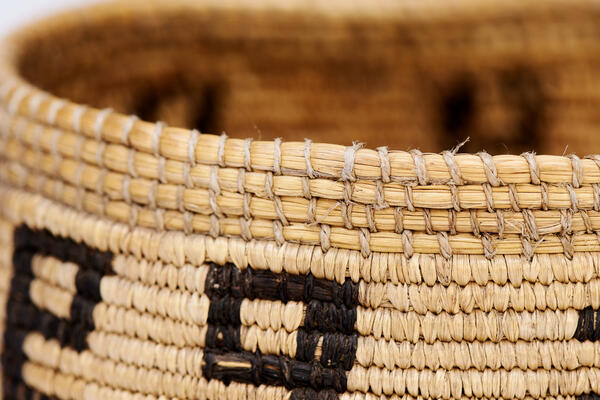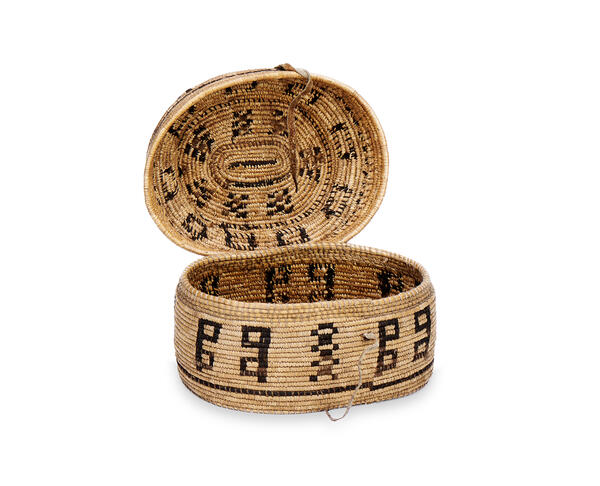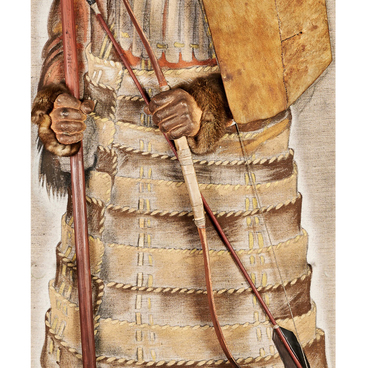Wicker baskets made of grass fibers are traditional household utensils of Itelmen people. In such baskets and sacks, women stored various small things. Larger baskets could be used for gathering and storing wild crops, berries and dried mushrooms.
Coastal seagrass, or rye grass, was often used in the process of making such handicrafts. This plant was called “tuveika” by indigenous peoples. Its height can reach up to 150 centimeters. The leaves of the plant usually have a bluish or grayish tint from a waxy coating. The stems are thick, feathery under the spike. The leaf blades are thick, flat, always curled lengthwise when drying, sharply ribbed and rough from above, and bare, smooth, rather stiff from below.
These plants are very resilient and strong. They grow in harsh environments where it is common to have cold sea fogs, significant amounts of precipitation, and frequent strong winds that blow snow off flat coastal plains.
The Itelmen people cut grass with sharp scythes made of whale blades. Such a tool could cut a lot of grass in a short time. Harvesting generally began in mid-July and continued through October. When cut and prepared, the grass was tied in small bundles and hung in a dry, ventilated and dark place. It took about two or three weeks to dry it. Only after that was it possible to use the grass for weaving. The grass was soaked in advance to make it more elastic.
There are several types of Itelmen basket weaving: traditional, “braid”, and grass. Itelmens used other types of grasses as well. Fresh green grass was used to make bags for short-term storage of fish, willow weed and Heracleum lanatum. Nettle was also common material. Nets for fishing and threads were among other things made from it.
Other items woven from grass were mats and curtains, which were used to decorate the walls and floors of dwellings as well as berths on which families slept. Rain capes woven of grass were also practical and comfortable. They looked like mantles or ancient cloaks.
The exhibit from the museum
collection was created in the early 20th century. An oval piece of sealskin was
inserted into the bottom of the box and cotton threads were woven in. The item
is ornamented with black-colored grass and has a leather strap attached to the
intricate lid.






